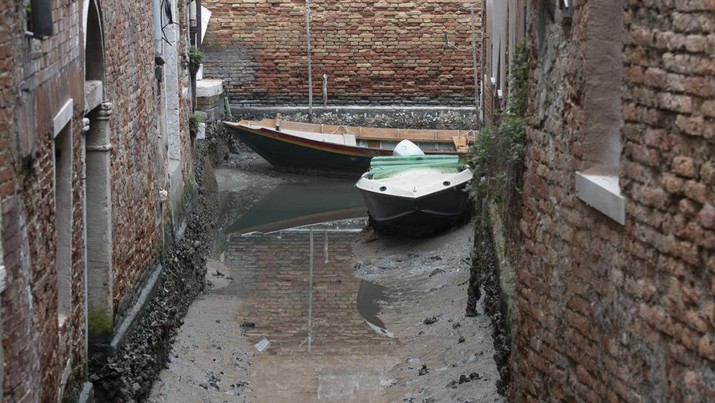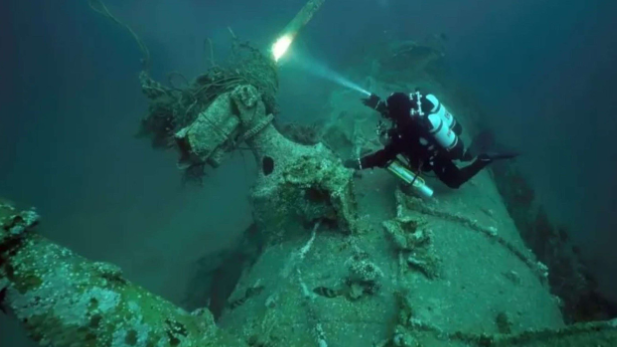The ocean, covering more than 70% of Earth’s surface, is a vast and enigmatic realm teeming with life and secrets. Despite centuries of exploration, the deep sea remains one of the least understood and most mysterious places on our planet. From bizarre creatures to unexplained phenomena, the ocean’s depths continue to captivate scientists and enthusiasts alike. In this article, we will delve into some of the most intriguing mysteries of the ocean, exploring the wonders and enigmas that lie beneath the waves.
The Deep-Sea Creatures
Bioluminescent Wonders
One of the most fascinating aspects of deep-sea life is the prevalence of bioluminescence. Many creatures in the deep ocean produce their own light through chemical reactions within their bodies. This bioluminescence serves various purposes, including attracting prey, deterring predators, and facilitating communication. Species such as the anglerfish, which uses a glowing lure to attract prey, exemplify the bizarre and captivating adaptations found in the deep sea.
In addition to anglerfish, the deep sea is home to a myriad of other bioluminescent organisms, including jellyfish, plankton, and even some types of squid. These creatures create a mesmerizing light show in the pitch-black depths, illuminating the dark waters with their ghostly glow. The study of bioluminescence not only reveals the incredible adaptability of life but also holds potential applications in medical and technological fields.
Gigantic and Mysterious Beings
The ocean’s depths are also home to some of the largest creatures on Earth. The colossal squid, for example, remains one of the most elusive and mysterious deep-sea inhabitants. With eyes the size of dinner plates and tentacles equipped with sharp hooks, the colossal squid is a formidable predator. Despite its size, encounters with this creature are rare, and much about its behavior and biology remains unknown.
Similarly, the giant isopod, a deep-sea crustacean, can grow to be more than a foot long. These oversized relatives of the common pill bug are adapted to survive in the extreme pressures and cold temperatures of the deep ocean. The discovery of such enormous and peculiar creatures in the deep sea continues to challenge our understanding of marine biology and evolution.
Unexplained Phenomena
The Bloop
In 1997, the National Oceanic and Atmospheric Administration (NOAA) detected a mysterious underwater sound that has since been dubbed “The Bloop.” The sound, which was captured by hydrophones located over 3,000 miles apart, was one of the loudest underwater noises ever recorded. Its origin remains a mystery, with theories ranging from marine animals to underwater volcanic activity. Despite extensive research, the true source of The Bloop has never been conclusively identified.
The intrigue surrounding The Bloop highlights the vastness of the ocean and the many unexplored regions that could harbor unknown phenomena. This mystery continues to fuel curiosity and speculation among scientists and the public, serving as a reminder of how much we have yet to learn about the deep sea.
Underwater Anomalies
In addition to mysterious sounds, the ocean is home to various unexplained structures and formations. One such anomaly is the “Baltic Sea Anomaly,” a peculiar, circular formation discovered on the floor of the Baltic Sea in 2011. Resembling a large, sunken structure, the anomaly has sparked numerous theories, including the possibility of it being a natural geological formation, a sunken ship, or even an extraterrestrial artifact. Despite numerous investigations, its true nature remains a subject of debate and intrigue.
Another notable underwater anomaly is the Yonaguni Monument, located off the coast of Japan. This submerged rock formation bears a striking resemblance to man-made structures, complete with terraces, steps, and columns. While some researchers argue that the monument is a natural formation, others believe it could be evidence of an ancient, submerged civilization. The mystery of the Yonaguni Monument continues to captivate archaeologists and marine geologists alike.
Lost Civilizations
Atlantis: Fact or Fiction?
The legend of Atlantis, a powerful and advanced civilization that supposedly sank into the ocean, has fascinated people for centuries. First described by the ancient Greek philosopher Plato, Atlantis is often depicted as a utopian society with advanced technology and unparalleled knowledge. Despite numerous claims and searches for its remnants, the existence of Atlantis remains unproven, and it continues to be one of the most enduring mysteries of the ocean.
Many theories about the location of Atlantis have been proposed, ranging from the Mediterranean Sea to the Caribbean. While some researchers believe that Atlantis could be based on real events, such as the volcanic eruption that destroyed the island of Thera (modern-day Santorini), others argue that it is purely a myth. The enduring allure of Atlantis lies in its combination of historical mystery and the possibility of discovering an ancient, lost civilization.
The Yonaguni Monument
As previously mentioned, the Yonaguni Monument off the coast of Japan is another potential link to lost civilizations. Discovered by a local diver in 1986, the monument’s precise geometric shapes and structures have led some to speculate that it is the remains of an ancient city, potentially dating back to the last Ice Age when sea levels were lower. The possibility that the Yonaguni Monument represents evidence of a previously unknown civilization adds a tantalizing layer to the mystery of the deep sea.
Despite ongoing research and exploration, the true origins of the Yonaguni Monument remain elusive. Whether it is a natural formation or a man-made structure, its discovery has sparked a renewed interest in the potential for uncovering lost civilizations beneath the waves.
Modern Exploration
Deep-Sea Submersibles
The advancement of technology has allowed for unprecedented exploration of the ocean’s depths. Deep-sea submersibles, such as Alvin and the remotely operated vehicle (ROV) Jason, have enabled scientists to explore previously inaccessible areas of the ocean floor. These submersibles are equipped with advanced cameras, robotic arms, and scientific instruments, allowing researchers to study deep-sea ecosystems, geological formations, and even shipwrecks in great detail.
The discoveries made by these submersibles have expanded our understanding of the ocean and its mysteries. From hydrothermal vents teeming with unique life forms to the discovery of new species, deep-sea exploration continues to reveal the incredible diversity and complexity of marine life.
Underwater Habitats
In addition to submersibles, underwater habitats such as Aquarius, located off the coast of Florida, provide scientists with the ability to live and work beneath the ocean’s surface for extended periods. These habitats offer a unique opportunity to conduct long-term research on marine ecosystems, behavior of marine species, and the effects of environmental changes on ocean life.
The insights gained from these underwater habitats contribute to our knowledge of the ocean and its mysteries, providing valuable data that can inform conservation efforts and our understanding of climate change. The continued development and use of underwater habitats will play a crucial role in unraveling the secrets of the deep sea.
Conclusion
The ocean remains one of the most mysterious and captivating places on Earth. From the enigmatic creatures that inhabit its depths to the unexplained phenomena and potential links to lost civilizations, the mysteries of the ocean continue to inspire wonder and curiosity. As technology advances and exploration efforts continue, we are likely to uncover even more secrets hidden beneath the waves. The journey to understand the ocean and its mysteries is far from over, and each new discovery brings us one step closer to unveiling the true nature of this vast and enigmatic realm.



